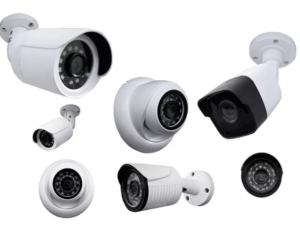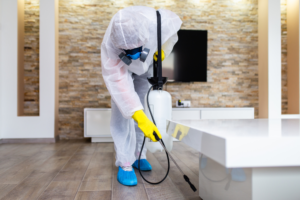An exterminator is a professional who removes unwanted pests from homes and businesses. They use chemicals and traps to eliminate pests such as ants, cockroaches, and rodents. They also identify the source of pest infestations and recommend corrective measures. Click the https://seasidepest.ca/ to learn more.
In the first step, an exterminator inspects the affected area. They may also advise customers on preventing future infestations, such as improving sanitation and sealing cracks.

An exterminator helps protect homes, businesses, and public spaces from insects and rodents that spread disease or annoy people. They use traps and chemicals to kill or repel pests and may also be called on to perform inspections or cleaning in sewage systems, garbage disposal sites, and other places where pests can hide.
Exterminators can be self-employed or work as part of a large pest control company. In both cases, they must complete a 3-month general training course before becoming licensed to use pesticides. They must also be able to follow all relevant safety procedures when working with toxic substances. Some exterminators specialize in certain types of pests, such as termites, cockroaches, fleas or bed bugs.
In residential settings, exterminators work with the owners of houses and apartments to develop a pest management plan that will prevent problems in the future. In commercial settings, they may work with restaurant owners or hotel managers to help them implement a pest control program.
A typical day for an exterminator includes heading out to inspect a wide range of properties, taking measurements and recording the results of their treatment. They may use traps and baits to capture pests, or they might spray chemical treatments directly into areas where infestations have been discovered. They are also required to keep records of all their activities and keep up with the latest safety regulations governing the use of pesticides.
Another important duty for an exterminator is listening to their customers. They know their homes or offices like the back of their hands, and they can tell the exact locations where pests are likely to live or hide. This information can be very useful when creating a prevention plan, and it can also help the exterminator determine which pests are more likely to return after an initial treatment.
One of the most important duties of an exterminator is educating their clients on how to prevent future pest infestations. This can include recommending sanitation practices, providing advice on structural repairs and educating clients about proper garbage disposal. It can also involve advising clients about how to protect their property from pests, such as by installing barriers around the house.
Education and Training Requirements
If you’re interested in becoming an exterminator, the first step is to complete a high school diploma or GED. Many states also require additional education or training before you can work as an exterminator. This can include a course on chemical safety, pest identification and control methods, and how to properly apply pesticides. In addition, you’ll need to pass an exam to obtain a license. The requirements vary by state, but they’re usually similar. Then, you can start applying for entry-level jobs with a pest control company.
The next step is to get on-the-job training and learn the ropes. This will give you the experience and skills you need to be successful in this career path. Many pest control professionals begin their careers as technicians and work their way up the ladder, eventually specializing in specific areas like termite or bed bug removal. Some even choose to open their own independent pest control company. This can offer a great opportunity to earn higher exterminator salaries, as well as establish a unique brand and approach to the industry.
Exterminators can work in a variety of settings, including homes, businesses and commercial buildings. They often spend a lot of time in the field, and may need to enter sewer systems or garbage disposal sites to identify the source of pest infestations. This can be dangerous, but it’s necessary for the job.
It’s important for an exterminator to stay up-to-date on industry standards and advancements, as this can help them to remain competitive in the market. For example, new regulations on the use of pesticides may affect how an exterminator practices their profession. It’s also a good idea for an exterminator to get business insurance to protect themselves from financial liability.
In the United States, there are a number of different types of licensure for exterminators. For example, in New York, a pest control applicator can get licensed to apply restricted-use pesticides in non-residential buildings. The application process can be complicated, but it’s worth the effort to become licensed. To apply for a license, you’ll need to register with the New York State official website and request a personal NY gov ID.
Work Environment
A pest control technician, also known as an exterminator, works to eradicate infestations of pests in homes, businesses, and other environments. These professionals are also trained to provide preventative services, including advising clients on ways to improve sanitation and seal cracks or gaps that could serve as entry points for pests. They may also recommend treatments that are safer for the environment and family members.
Pest control is a growing field, and jobs in this career are often highly sought after. Workers who are members of state or national pest control associations can find mentorship, training, and ongoing education opportunities that can help them advance in their careers. Additionally, many pest control companies offer competitive benefits packages and salary ranges that are comparable to other trade or skilled occupations.
As a member of the DEP Green Infrastructure Maintenance Program, you will perform detailed inspections of City-owned Green Infrastructure assets and facilities and provide expert guidance in treatment responses. You will select, prepare, and deploy the most effective and efficient insecticides, rodenticides, baits and traps to eliminate pests as required. You will also provide weekly reports that include records of equipment usage, work schedules and exterminating operations performed. Your duties will also involve operating and maintaining DEP vehicles and equipment safely.
Salary
The salary of an exterminator can vary depending on the level of expertise and experience they have. Those who have several years of experience under their belt often command the highest salaries. These professionals have a clear understanding of all the methods, products, and tools that are needed to eradicate different pests, including bed bugs, rodents, and cockroaches. They can also provide homeowners with tips on how to prevent pest infestations from occurring in the future.
It is important for an exterminator to have strong customer service skills. They frequently interact with clients to determine their pest control needs and advise them of what services are available to them. They also perform inspections of homes to determine the status of their pest infestations. Exterminators may need to perform these duties in all kinds of weather, so they should have good stamina and be prepared to spend long periods of time standing or crouching for extended periods of time.
Exterminators must be able to identify the type of pest that has invaded a home and then develop a plan for getting rid of it. This can involve using chemicals, traps, or both. Some of the most common pests that exterminators deal with include roaches, mice, and rats. They can also be responsible for eradicating fleas, hornets, and mosquitoes. These pests can cause a variety of diseases, including malaria, yellow fever, and hantavirus. Exterminators can help to reduce the risk of pests spreading these diseases by eliminating them as soon as they are spotted.
A successful exterminator should have excellent attention to detail and be able to work quickly. They should also be able to follow all safety regulations and be up to date on the latest pest control techniques. Additionally, they should be able to work well as part of a team and communicate effectively with other people.
The salary of an exterminator can be affected by a number of factors, including education level, work experience, and additional skills. For example, a higher education degree or certification in entomology can increase an exterminator’s salary. Other factors that can affect an exterminator’s salary include geographic location, the demand for pest control in their area, and regional pest control requirements.







